- Home
- Brian Garfield
Suspended Sentences Page 4
Suspended Sentences Read online
Page 4
Initially this story was published over a pen-name, in the same issue of Ellery Queen’s Mystery Magazine that contained one of my Charlie Dark espionage stories. Perhaps the magazine was short of material that month. Because two of my stories were appearing in the same issue, the editor asked if I would mind putting a pen-name on one of the two stories. I agreed, and supplied the name. John Ives was the name of a character who had appeared in a couple of my books; subsequently it became a nom-de-plume under which I wrote two novels in the late 1970s.
The body was found along Route 783 just outside the town of Aravaipa. The woman who found it was a Navajo lady; I learned that she and her dogs had been herding a flock of sheep across the road at dawn to beat the morning traffic. She’d roused a dairy rancher and the phone call had been logged in at the Sheriff’s office at 5:44 a.m. I was brought in around noon when one of the Undersheriffs picked me up in a county car; he filled me in on the way to Pete Kyber’s office. “We’ve got a corpse and a witness. Or at least we think he’s a witness.”
“Who’s the victim?”
“Name of Philip Keam. Thirty-something. Reporter for one of the Tucson newspapers.”
“You notified next of kin?”
“Divorced, no children. The parents may be alive — we’re trying to find out.”
Officially the temperature went to 103° Fahrenheit that day, which meant that down along the surface of the plain it was near 140°. The asphalt of the Sheriff’s parking lot was soft underfoot, sucking at my shoes, and I hurried into the air-conditioned saltbox before I might melt. Slipping off the sunglasses I made my way back to the Sheriff’s private office.
Pete Kyber was long-jointed and Gary Cooperish; slow-moving and slow-talking but not particularly slow-thinking. His most noticeable feature was his Adam’s apple. Pete was no relation to the redneck stereotype; he was by instinct a conservationist rather than a conservative. How he and I ever got elected to our offices in that rural county still mystified me.
He watched me sit down; he was gloomy. “We got a bloody one, Mike.”
“I’ll have a look on my way out. What’s the story?”
“Bludgeoned to death. With a rock.”
“No fingerprints?”
“On a rock?”
“Who’s this witness you’ve got?”
“Larry Stowe. Just a kid.”
“Would that be Edgar Stowe’s son?”
“Yes.”
Edgar Stowe ran the drugstore in Aravaipa. He didn’t own it — it was a chain store — but he was the manager. His son Larry would be about 22, I calculated; one of my kids had been in the same high-school class. I remembered the Stowe boy coming around the house now and then, but that was five years ago. He’d struck me as an unremarkable kid, towhead and a bit vacuous.
“What’s Larry got to say?”
“We’re having a hard time getting a straight story out of him. You’d better talk to him yourself.”
“All right. First tell me what you’ve got.”
“Well, Keam was robbed. His wallet’s gone. We called the paper in Tucson to find out what he was doing over here. The city desk man got lathered up and I had to calm him down. But I’m afraid we’ll be knee-deep in newspapermen by this afternoon. Keam was up here investigating a story about land frauds. Digging into the Inca Land Company developments.”
“Ron Owens.”
“Yes.” Pete Kyber made a face to indicate his opinion of Ron Owens — real-estate tycoon, despoiler of the wilderness. I knew Owens, not intimately, and disliked the man as much as Pete did. Usually Owens could be found sporting around in his Lear Jet, flying his pet Congressman to Las Vegas, or partying with his Oklahoma oil chums and expatriate Detroit gangster buddies. The “desert estates” he sold were rickety instant-slum dwellings encrusted on drearily bulldozed scrub acres.
Dozens of lawsuits were outstanding against Owens, brought by home buyers who attested that the Inca Land Company had failed to make good on its advertising and had defrauded them in multifarious ways. Naturally Owens had a phalanx of lawyers, some of whom had practiced in Washington and all of whom were adept at delaying cases until hell froze over. Owens was as slippery as a watermelon seed.
Pete Kyber took me back to the interrogation room where Larry Stowe sat picking his fingernails. Pete said, “Larry, you know the prosecutor here, Mike Valdez.”
“Yes, sir.” Larry was still towhead, still vacuous — his mouth hung open most of the time — and, at the moment, uptight.
“Sure we know each other.” I shook hands with Larry. “How are you, son?”
The kid’s handshake was perfunctory, his palm damp; he had trouble meeting my eye. “How’s Mike Junior doing, sir?”
“Fine, just fine. Finishing up at the University this year.”
“That’s, uh, that’s great, sir.”
“Pete, you want to leave us a while.”
“Sure thing.” The Sheriff retreated and shut us in.
I sat down facing the youth across the chrome-and-vinyl table. “Okay, Larry, would you like to go through it with me?”
He was reluctant but I kept at him with gentle persuasion and finally it came out, sheepish: he’d spent the night with a girl at her parents’ ranch a few miles up the highway and that was why he’d been walking back into town so early in the morning. He didn’t want to involve the girl, didn’t want her parents to know he’d spent the night — he admitted with a nervous laugh that he’d left by the bedroom window with his shoes in his hand.
Once we got past that obstacle he told a straightforward story. He’d been walking along the highway shoulder; it wasn’t yet dawn hut it was a clear night. Down along Mule Deer Creek he’d walked under the cottonwoods where the big corrugated culvert funneled the creek under the road and he’d heard voices raised in argument. Curious and cautious, Larry made his way past the trees into the brush beside the road. He saw a big car parked in the dust — a Cadillac. Larry didn’t know much but he did know cars and he described that one in fabulous detail, right down to the license number, and I made notes as he talked.
Three men stood out on the slickrock and Larry recognized two of them — cowboys he’d seen around Tooner’s Bar, drinking beer and pawing at the waitresses. The third man was a stranger to Larry; of course that was Philip Keam, the reporter from Tucson.
The cowboys were arguing about what to do with Keam. Larry said, “Bud Baker kept saying they ought to beat the guy up and dump him. The other guy, Sammy Calhoun, he was scared, I guess. He kept grabbing at Bud’s arm and saying they better turn the guy loose or they’d get in trouble with the Sheriff. And then I heard Bud say that was what they were getting paid for, to put a good scare into this guy so’s he’d quit nosing around. Then this guy between them, he interrupted the two of them and said, “You two have only got two choices. You got to kill me or let me go, because if you start dumping on me I’ll sign a complaint for forcible kidnapping and assault and battery.”
Larry swallowed; I saw sweat on his forehead. “So old Bud Baker just says, real calm-like, he says, ‘All right, if that’s how you want it,’ and I see him reach down and pick something up and hit this guy over the head with it. He hit him three-four times while he was falling.
“Then Bud and Sammy, they went through the guy’s pocket’s, and I guess they taken his wallet, and after that they run over to that Cadillac and I watched them drive away. It was starting to get light and this Indian woman come along with some sheep, and I stayed hid-up there in the brush till I seen her run for help, and then I run on home. I figured she’d give the alarm, you know, but then I kept, you know, thinking on it, and finally I come down here to see the Sheriff.”
I obtained warrants on Baker and Calhoun; Peter Kyber’s men went out to arrest them. Pete and I picked at Larry Stowe in several sessions, trying to nail down evidential details; his testimony was direct, his memory clear, and I knew we had a first-class witness in him.
We tried to sweat Baker and Calhou
n but they’d been coached. They stood mute, refused to answer any questions without their lawyer, admitting nothing. The lawyer was a skinny fellow from Phoenix who drove up in an air-conditioned Corvette. He wore a sharkskin suit and aviator sunglasses. His name was William Farquhart and he had a white toothy smile —“Just call me Bill”— and I loathed him on sight.
We were obliged by the rules of disclosure to give him the outlines of our case; we had to tell him we had an eyewitness and we had to tell him the substance of the witness’ testimony. Before the trial we would have to show him a transcript of Larry’s formal statement, at which time we knew the lid would blow off because the bad guys would know the identity of our witness and they would also know we had a positive make on the car driven by the two killers: Ron Owens’ Cadillac.
We forestalled the latter problem by impounding Owens’ car on a bench warrant but this only alerted Owens & Company to their jeopardy and within 24 hours lawyer Farquhart had been reinforced by the importation of three powerhouse lawyers from Tucson and Phoenix.
And later that day Larry Stowe came into my office, scared white. “I got to talk to you. They want me to change my story.”
He’d never seen the two men before. They’d hustled him into the back seat of their car. “It was a two-tone green ’73 Chevy Suburban.” They told him to shut up and just listen.
“This guy says in the first place they’ve got five respectable witnesses to testify Bud and Sammy was over to the Sonoita rodeo grounds that morning, so they couldn’t possibly of been up here beatin’ Keam to death with a rock. Then they told me they got a witness who’ll swear he seen me throw something over the fence behind Tooner’s Bar, and this witness went and picked it up and it turned out to be Ream’s wallet.”
“They told me I’d be accused of the murder myself unless I change my testimony and say it was too dark to see the two guys that killed Keam. They say if I don’t identify Bud and Sammy in court they’ll leave me alone.”
“Thanks for coming forward, Larry. You’ve got guts.”
I said to Fete Kyber, “It’s dismally effective. At least we can see the defense tactics now. They intend to make it look as if Larry killed Keam himself — to rob him — and then tried to shift the blame onto the two cowboys.”
“It’s possible that’s what actually happened, Mike;”
“No. I know the kid. Larry’s got a feeble imagination. He could never have dreamed up that story and kept to it so faithfully. He’s not a killer — he never even goes hunting with the other kids — and I don’t believe he’s ever stolen anything in his life.”
“Dumb but honest,” the Sheriff said. “But we’re still in a bind here. If they produce a gang of witnesses to impeach his testimony, we won’t get a conviction. Reasonable doubt.”
I said, “I’m disinclined to let them get away with murder, Pete.”
“Sure, but I don’t know what we can do about it.”
I got up to leave. “Two can play at dirty pool, you know.”
“Larry, if you took that wallet off the body after they killed him, you’d better tell me now.”
“No, sir. I’d admit it if I’d done it. I didn’t do that.”
“All right.”
Bill Farquhart, the oily lawyer, agreed happily to a private meeting with me. Of course he expected me to offer a deal and I didn’t disabuse him of that misapprehension until we met over a lunch table in a poorly lit booth in Corddry’s Steak House.
Farquhart’s dark hair fluffed around his ears Hollywood style; in the sharkskin suit he was all points and sharp angles. But he was reputed to be a splendidly effective courtroom lawyer.
He ordered a dry martini and talked about the hot drought but I cut him off because I hadn’t the patience for small talk. I said, “Ron Owens thinks he’s got this thing framed up perfectly, doesn’t he? Let’s not waste each other’s time — we both understand the situation.”
“I guess we do, Mr. Valdez. Defense wins, prosecution loses. That’s the score.” He laughed gently at me, very sure of himself.
I said, “As far as I’m concerned you’re an errand boy for Ron Owens. I’ve got a message for you to carry back to him. You just listen to it and carry it to him. Understood?”
He gave me a pitying look. “Valdez, I don’t take that kind of talk from two-bit Mexican civil servants.”
That elicited my hard smile. “I’m the elected prosecuting attorney of Ocotillo County, Mr. Farquhart. As for the other, I’m not Mexican, I’m American. It’s my country here, not yours. My ancestors were right here in this county while yours were still burning witches in Scotland. But the key point on the table right now is this. I’m the County Attorney in a county where Ron Owens has eighty-three percent of his assets tied up. Does that suggest anything to you?”
He smiled slowly; he thought he understood. “Okay,” he said, “what’s the deal?”
“This time I’ll settle for Baker and Calhoun. I want their heads in a basket. And I want Ron Owens out of this county, lock, stock, and barrel. Right out.”
“I guess you know better, really.”
“No. I’ll tell you something, this isn’t Phoenix where everybody’s got his hand out for graft and things are big enough to provide anonymity for men like Ron Owens. You’re in a small town now and we tend to be unimpressed by Sy Devore suits and Hollywood sunglasses and Corvettes and big-city methods of extortion and intimidation. You don’t realize it but these are tough people out here. They have to be, to survive in this desert. They chew up clowns like Ron Owens and spit them out.”
His eyes were hooded; he feigned boredom. “What’s the message, Mr. Valdez? I’m getting tired of this small-town boosterism.”
“You’ve listed six defense witnesses who may be called during the trial to impeach Larry Stowe’s testimony and to alibi the defendants. Of course you won’t bother to call those six witnesses if Larry fails to identify Baker and Calhoun, correct?”
“You’re doing the talking.”
“Here’s the message, counselor. Commit it and pass it on. One. Larry Stowe is under police protection. You won’t find him until he appears in court, so you may as well forget any further attempts to threaten him or assault him. Two —”
“Are you accusing me of —?”
“Shut up. Larry will testify to what he saw — the deliberate and unprovoked murder of Philip Keam.”
“Three: you will fail to call the six perjuring witnesses. The trial will take its course on the basis of the truth, and we’ll take our chances on getting an honest conviction.”
“Four: should you or Ron Owens disregard my warning, and should you bring forward your six witnesses to give false testimony, then certain things will begin to happen in this county. Ron Owens will find himself up to here in property-tax auditors and land reappraisals. He will find every application for a building permit held up for months, perhaps years. He will find his heavy construction equipment impounded by the County for violations of safety and pollution regulations. He will find his car ticketed incessantly for violations of vehicular codes, and he’ll find his home, his office and other real property cited for every conceivable violation of the building codes. He will find himself and his executives subjected to an endless barrage of bureaucratic foul-ups, lost applications, misplaced documents — a nightmare of red tape, a systematic campaign of official harassment that will bring all his businesses to a total standstill and result in the across-the-board bankruptcy of every enterprise controlled by Ron Baylor Owens.”
“And one more thing,” I added in the same quiet voice. “It’s conceivable that some fatal accident just might happen to befall me if I began to put such a campaign into action. You and Owens should be aware that this is a rural county and that my family is one of the oldest here. We’ve known one another for generations around here. Some of these old boys — friends of mine, I play poker and hunt deer with them — some of these gents can shoot a flea off a coon-dog’s ear at six hundred yards. They’re
not above settling their grievances in the old-fashioned frontier manner. I’d like you and Owens to understand that if anything happens to me, it happens to Owens. I doubt it’s much fun spending the hours wondering when to expect the bullet out of the darkness.”
I got up and left him then; I’d said all I had to say.
Part of it was a bluff. I don’t number any killers among my friends. But Farquhart and Owens were city boys and they didn’t know that for sure; we had a redneck reputation up our way.
The rest of it had been quite true. I was fully prepared to drown Owens’ companies in bureaucratic obstructionism and it would have been perfectly legal to do so: if you actually enforce every ludicrous regulation in the law you can cripple anyone. The reason it hadn’t already been done in Owens’ case was that he’d been pouring a great deal of money into the economy of the county. Folks are willing to put up with all sorts of shenanigans if prosperity comes with them. But people up in Ocotillo County are still a bit old-fashioned: they don’t condone willful murder as an acceptable way of doing business. I’d have had no trouble getting the cooperation of the other county officials.
Coercion is a two-way street. Owens and Farquhart were dealers in fear; I’d given them their own medicine.
Farquhart and his supporting battery of big-town attorneys put up a good defense but they didn’t produce the six lying witnesses; Baker and Calhoun were convicted on the steadfast testimony of Larry Stowe and the evidence of bootprints and a few other tangibles left at the scene. The killers were sentenced to twenty-year-to-life terms in the State Penitentiary at Florence. Rumor has it that Ron Owens had to pay both of them enormous sums to ensure that they wouldn’t implicate him in the murder. The presence of his Cadillac at the crime meant nothing; Owens simply gave out the story that he’d lent the car to the two cowboys but had no idea what they meant to do with it.
But Owens pulled out of the county with satisfying alacrity. It took him a while to liquidate his properties but by Christmas he was gone, his offices closed, his residence sold.

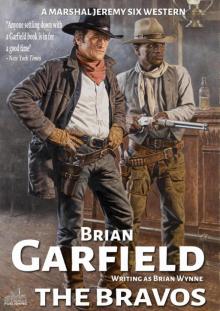 Marshal Jeremy Six #3
Marshal Jeremy Six #3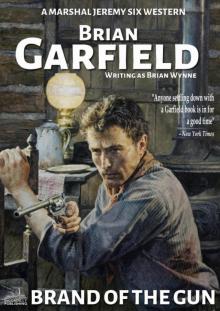 Marshal Jeremy Six #6
Marshal Jeremy Six #6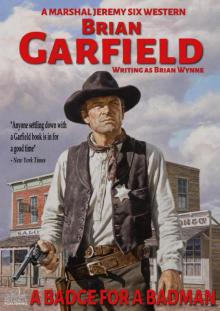 Marshal Jeremy Six #5
Marshal Jeremy Six #5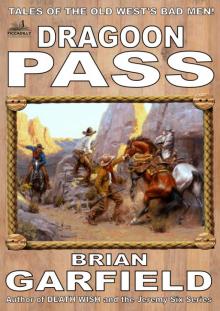 The Outlaws 2
The Outlaws 2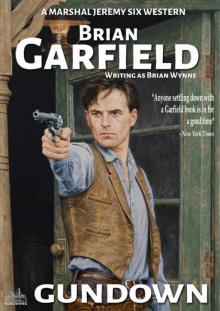 Marshal Jeremy Six #7
Marshal Jeremy Six #7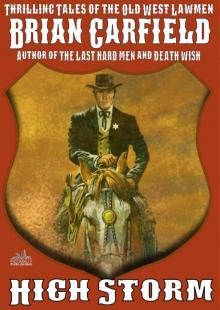 The Lawbringers 4
The Lawbringers 4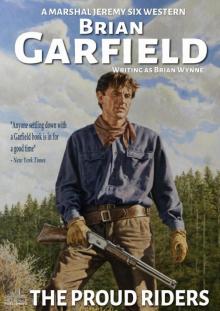 Marshal Jeremy Six #4 the Proud Riders
Marshal Jeremy Six #4 the Proud Riders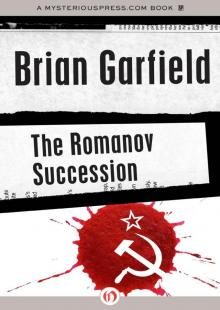 The Romanov succession
The Romanov succession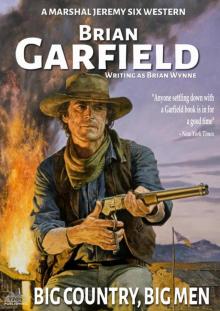 Marshal Jeremy Six #8
Marshal Jeremy Six #8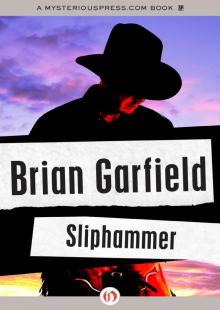 Sliphammer
Sliphammer Line of Succession
Line of Succession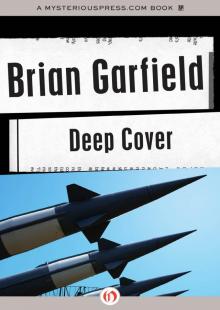 Deep Cover
Deep Cover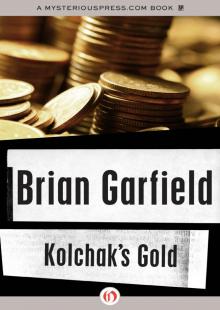 Kolchak's Gold
Kolchak's Gold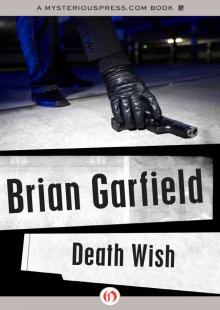 Death Wish
Death Wish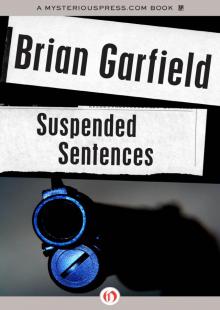 Suspended Sentences
Suspended Sentences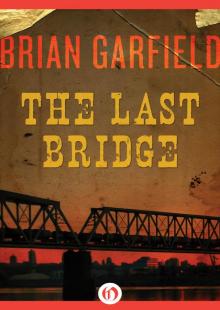 The Last Bridge
The Last Bridge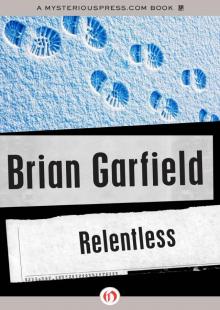 Relentless
Relentless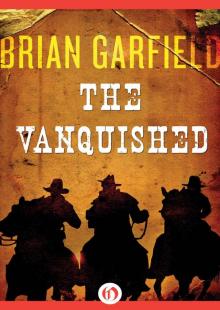 The Vanquished
The Vanquished The Last Hard Men
The Last Hard Men Hit and The Marksman
Hit and The Marksman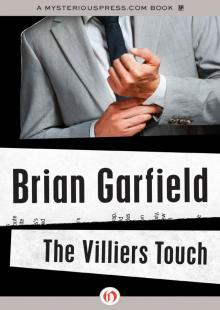 Villiers Touch
Villiers Touch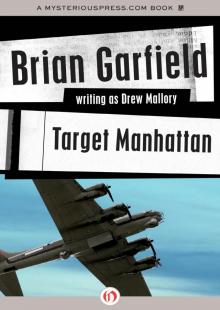 Target Manhattan
Target Manhattan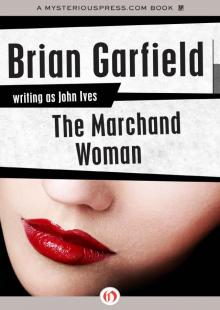 Marchand Woman
Marchand Woman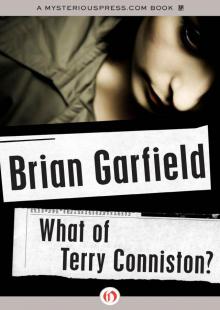 What of Terry Conniston?
What of Terry Conniston?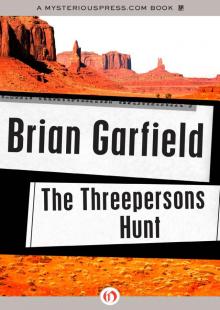 Threepersons Hunt
Threepersons Hunt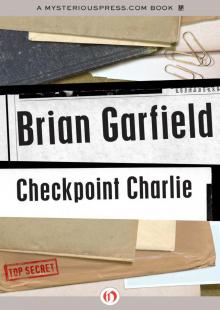 Checkpoint Charlie
Checkpoint Charlie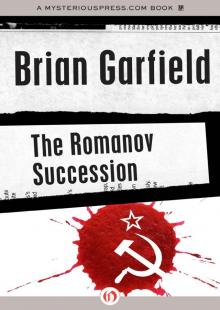 Romanov Succession
Romanov Succession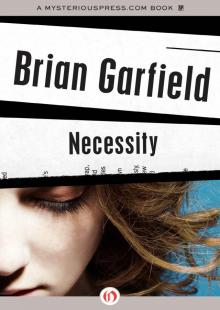 Necessity
Necessity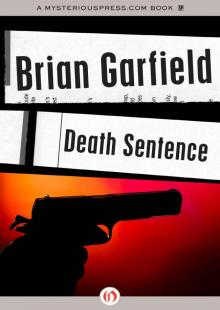 Death Sentence
Death Sentence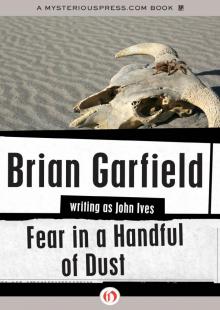 Fear in a Handful of Dust
Fear in a Handful of Dust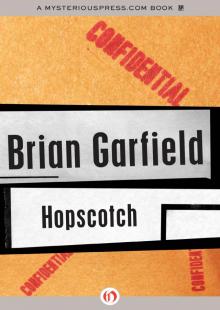 Hopscotch
Hopscotch